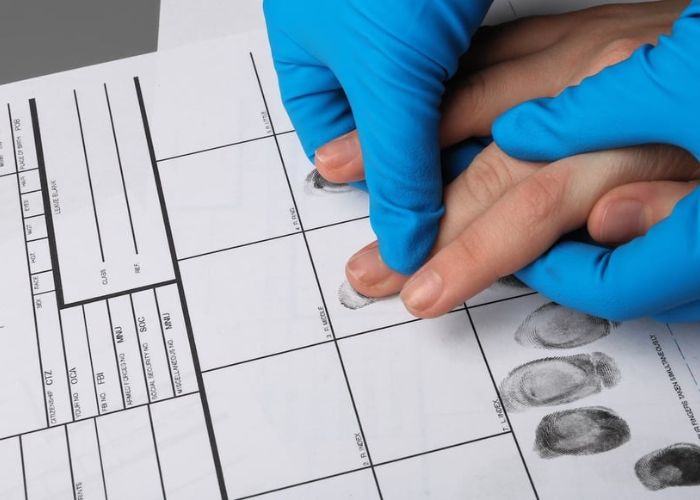As a travel writer who has spent more than seven years exploring Europe, I was surprised to learn that Americans will have to get fingerprinted when they visit starting in November 2022. Many US citizens who are used to easily entering the EU will have to change their trip plans because of this extra screening step. In this piece, I’ll talk about these new rules in general, share traveler stories from my network, and give you tips on how to easily navigate the new security protocols. Read below about “Americans New Fingerprinting Requirement for Europe Starts in November”.
Table of Contents
Americans New Fingerprinting Requirement for Europe Starts in November
What’s Different for Americans Going to Europe?
From November 2022 on, people with a US visa will have to show their fingerprints and a photo when they cross any EU border. This biometric information will be compared to EU security files for all travelers between the ages of 14 and 79, even if they don’t need a visa. It’s part of the bigger European Travel Information and Authorization System (ETIAS), which is meant to make the country safer and make sure that people from more than 60 non-EU countries follow the rules for entering.
Before, Americans could visit Europe for up to 90 days for work or pleasure with a valid passport. This new rule adds another level of checking to the immigration process. Some people think this is a bother, while others are glad for the extra safety. As someone who has traveled around Europe a lot, I can see both points of view. We all want safe and fun trips in the end, so I’m all for this if it helps reach that goal.
Travelers’ Responses: Inconvenience, Fear for Safety, and Confusion

A lot of people in my traveler group have different feelings about the new fingerprinting rule. Some people think it’s too much trouble, especially for places like the US that already have pre-screening rules in place. Others are worried about the safety of personal information because fingerprints store private biological data. A lot of people are just not sure how the standards will work in real life.
Cole, who went to Portugal last month, said, “I’m dreading the long lines and extra time this could add to arrivals after a long flight.” So did I. He hopes that the people who work with immigration will be well-trained so that everything goes smoothly. Families like the Johnsons who go to Italy all the time are worried about new rules that make it harder to get away for the weekend.
Some tourists, like my coworker Amanda, are more at ease knowing that European leaders are taking security seriously in a world that is becoming less stable. She supports any attempts to find dangerous people before they enter and understand Americans New Fingerprinting Requirement for Europe Starts in November.
I think we’ll get used to the new rules, just like we did with the old ones. Implementation—having enough people and technology in place to avoid too many delays—will be very important. Always give yourself extra time when you travel, but especially when you’re going during busy times. It will be important to be patient and understand!
Tips for Smooth Sailing Through the New EU Entry System
As someone who has traveled to Europe many times, I’d like to share some tips with other Americans on how to easily handle the new fingerprinting rules:
- Sign up for fingerprinting and a picture at US Preclearance locations: At Preclearance airports in places like Dublin, Ireland, and Aruba, US citizens can finish biometric registration before they arrive in Europe. We can get into the EU faster this way.
- Bring digital copies of your papers with you: Keep digital copies of your passport, proof of where you’ll be staying, and travel insurance close at hand. Digitization makes things safer and faster when it comes to verifying identities.
- Plan for extra time to arrive: To account for the extra screening steps, give yourself at least 30 to 60 minutes more time than normal to get into the EU.
- Get passport apps for your phone: You can skip lines by using apps like Mobile Passport Control to send in your entry information on your phone. Make an account for EU ETIAS too.
- Ask people who work with immigrants for help: If you are having trouble with fingerprint scans or document checks, please ask the agents nicely for help or more information.
- Wait your turn and stay calm: At first, the process might take longer while the new technology and staff get used to it. If you’re angry, take a deep breath. The people working at the border are just doing their jobs.
- Charge your gadgets ahead of time: Make sure your phone is fully charged so you can easily access digital files and apps. As a backup, think about pocket chargers.
- Find out how to enter each country: Along with the EU-wide fingerprinting, find out if the country you’re going to has any other standards.
Thoughts from Professionals in the Travel Industry
As I looked into this new EU policy, I also wanted to know what people who work in the travel business thought about it. Here are some thoughts from two people I talked to:
As a flight attendant for United Airlines, Mark Dunn:
“Our staff has been getting training in preparation for the EU’s new biometric entry rules.” When extra security steps are added, it’s always hard to get used to, but our goal is to work with immigration staff to help passengers get through as quickly as possible. I believe that the US and EU governments could work together to improve the screening process so passengers don’t have to start over at each end. We all want safe skies, though, so I hope these steps add another layer of protection.
Looking Ahead to Travel in the Future
When we think about going to Europe in 2023 and beyond, these changes to the entry requirements are just one step in the progress of making travel safer and more secure. Biometrics and digital identification are two new technologies that are likely to grow to make things easier and protect the country from new threats.
As a travel writer with a lot of experience, I’m sure that American travelers will not mind the new scanning rules. We’re tough people who are always ready for new experiences! I think the best advice is to keep up with the latest rules, bring patience, and get ready to enjoy the magic of Europe when you get there. Good luck, fellow tourists!

Jamal is the knowledgeable voice behind EDB Travel, bringing over 4 years of experience in travel writing and destination expertise. Holding a degree in Tourism Management, Jamal specializes in showcasing Jamaica’s rich culture, vibrant attractions, and hidden gems. His extensive background and local insights provide readers with valuable tips and in-depth guides to explore Jamaica like a pro. Follow Jamal on Pinterest and Instagram for the latest travel inspirations and updates.

